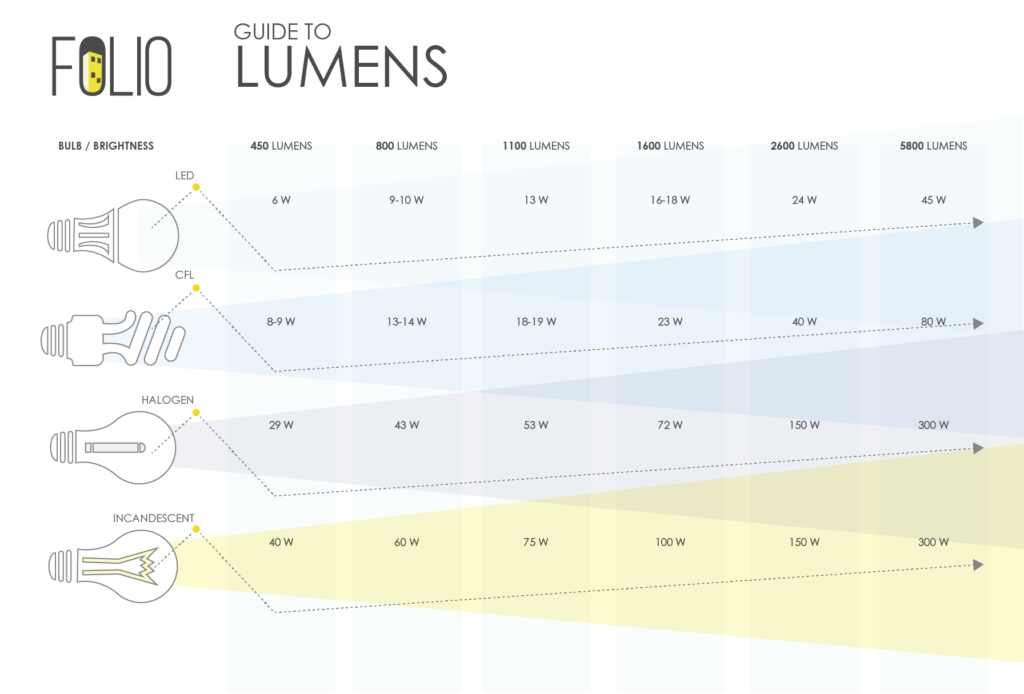As an integral part of interior design, lighting plays a crucial role in creating a functional, stylish space. The ambiance of a room and its perceived size are also contingent on the amount of light present – and lumens have a large role in determining that.
Lumens, known as the amount of light or brightness received from a bulb, help ensure that there is appropriate lighting for a space. But knowing how many lumens to consider for your space’s lights can be difficult.
Before you make your next lightbulb purchase, here’s what you should know about the important role lumens play.
What are Lumens?
As a measurement of light, lumens describes the brightness received from a light bulb. As light leaves a fixture, it slowly disperses throughout a space. More light will be dispersed the further it has to travel.
Light that travels a shorter distance and/or is more narrowly focused will result in being brighter.
How to Measure Light
A light meter can be used to ensure a suitable amount of light is being used in a space.
Normally small enough to be hand-held and easily transported, light meters include a sensor that converts the light energy emitted into an electrical charge. This results in a reading being portrayed which describes the true level of light received.
The Importance of Using Lumens Correctly
The proper amount of lumens can have a significant impact on efficiency, productivity and safety within a space. The necessary amount of lumens fluctuates depending on individual needs as well as the task or process completed in a space.
When choosing the proper amount of lighting for your condominium’s common spaces, keep the following in mind:
- Corridors: 10-20 lumens per square metre
- Lobby Spaces: 20-55 lumens per square metre
- Spaces Needing Bright Light: 55 – 110 lumens per square metre
Overall, remember that a higher lumens amount results in a brighter light.
Incorporating the Proper Amount of Lumens in Your Condo’s Common Spaces
Lumens play a key role in setting the ambiance of a condominium common space.
For example, your building’s lobby is a space used to make residents and guests feel welcomed, safe and comfortable. A space that is too bright could create a harsh, uncomfortable space. Not enough lighting could make the space appear dim, dreary and unwelcoming.
 Confused? Consult with a Condominium Interior Design Expert
Confused? Consult with a Condominium Interior Design Expert
Employing the proper amount of lighting goes a long way in terms of a space’s perception, mood and aesthetic appeal. That’s why it’s always a great idea to consult with an interior designer for your condominium building’s lighting needs! At Folio Interior Design Group, our interior design team has the proper lighting knowledge of condominium common spaces.
Contact us today to learn more about our interior design services for condominium common spaces.
By Sarah McKenzie





